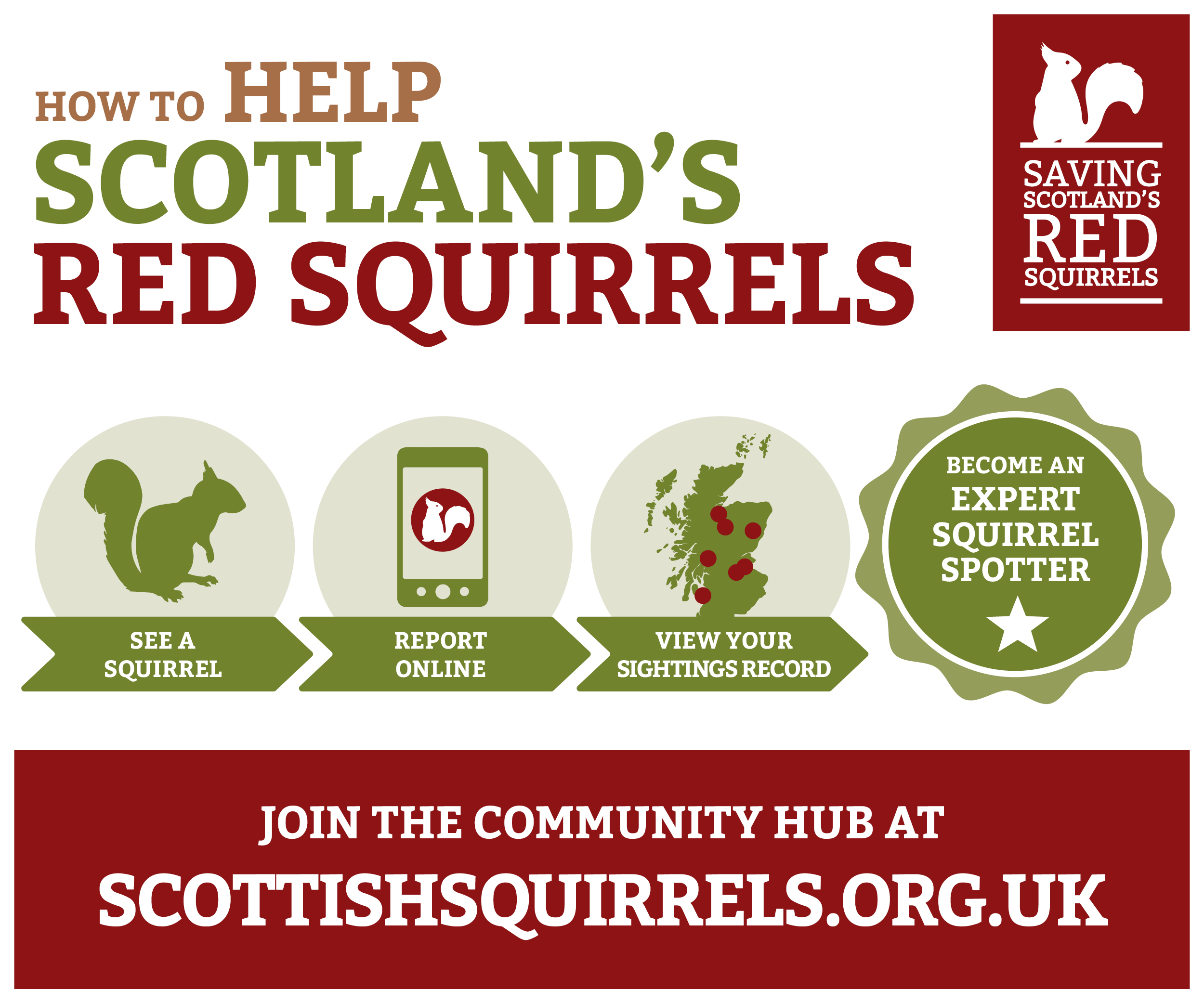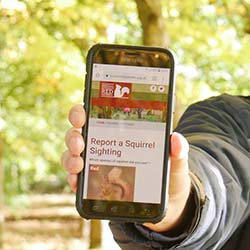We are fast approaching the Great Scottish Squirrel Survey 2021, and following last year’s fantastic response we are really looking forward to seeing this year’s results.
For those who haven’t participated before, the Great Scottish Squirrel Survey is a week-long event in September when we call on the general public to keep an eye out for red and grey squirrels in their area and submit their sightings to Saving Scotland’s Red Squirrels.
Why do we do this?
The information we get from your squirrel sightings gives us a clear picture of both red and grey squirrel movements, and helps us and our volunteers to direct our control efforts where they are most needed. It also gives us a year on year comparison of red and grey squirrel distribution throughout Scotland so we can measure the progress of the project.
How do you submit your sightings?
It’s very easy – just head to our website and on the homepage you can see the sightings information with a button for reporting a squirrel sighting. You will be asked for a grid reference, however if you are unable to supply this you can drop a pin on the map and a grid reference will be generated. If you have any additional comments on behaviour or location these can be really helpful, especially if you live in a squirrelpox hotspot (the south of Scotland) and think a red squirrel looks poorly.
Verification
Our job is to look at each sighting to make sure that all the details are correct including the grid reference; we have had the occasional sighting seeming to indicate a squirrel swimming in the North Sea! It is a huge job going through the thousands of sightings that come in throughout GSSS week, and we are fortunate to have volunteers able to verify sightings in their areas to help with the task.
Some sightings require action, especially grey sightings, as this is useful information for our grey squirrel control officers and volunteers as to where to focus their efforts. Most red sightings can be confirmed straight away, but if there is a comment that it looked sick, we will contact the person who reported it for more details. We keep a careful eye out for indications of squirrelpox virus, as we would want to prevent as far as possible the spread of the disease to other red squirrels via feeders.
Sometimes we get a report of a squirrel that turns out to be very important, for instance a recent report of a grey squirrel seen near Loch Katrine was worrying and surprising, as it has been a stronghold for red squirrels for many years, and is some distance from the nearest grey squirrel population. Swift action ensured that the squirrel was captured, and since then local people have kept a sharp eye out to make sure there aren’t any others in the area.
In Helensburgh however, no red squirrels had been recorded in living memory, only greys. That changed last year with a report of a red squirrel on the outskirts of the town, followed by further red sightings this year on the other side.
So, now that you know how the whole thing works, please get yourselves out into the woods, parks, and anywhere with trees, delight in the autumn colours creeping in, and keep your eyes peeled for squirrels!


